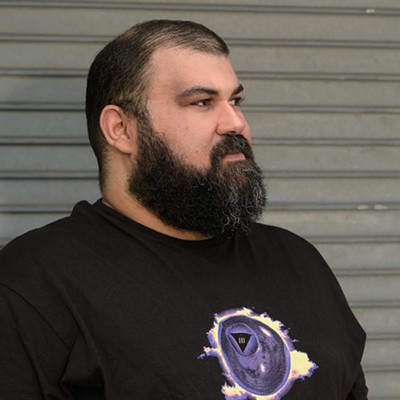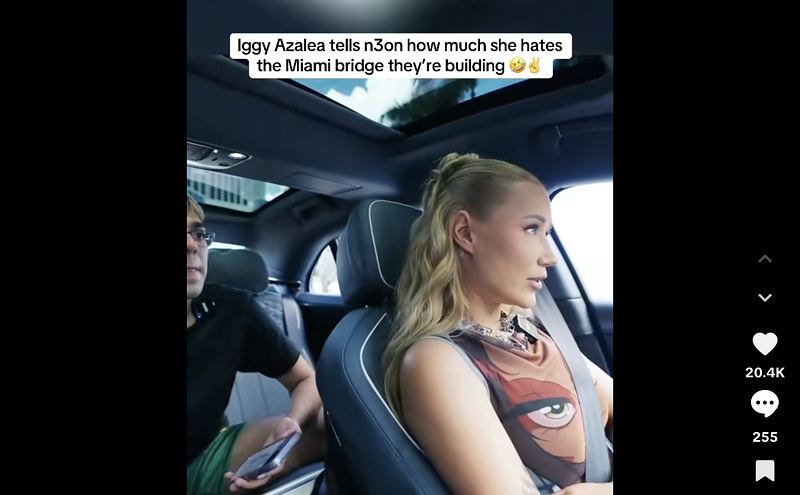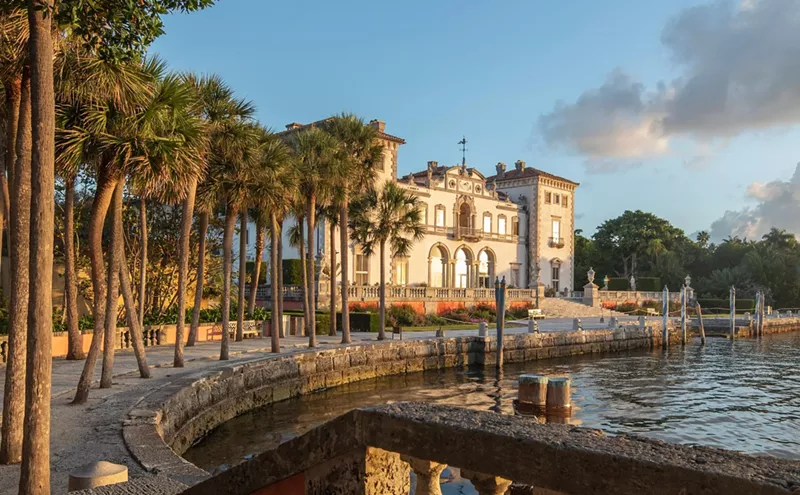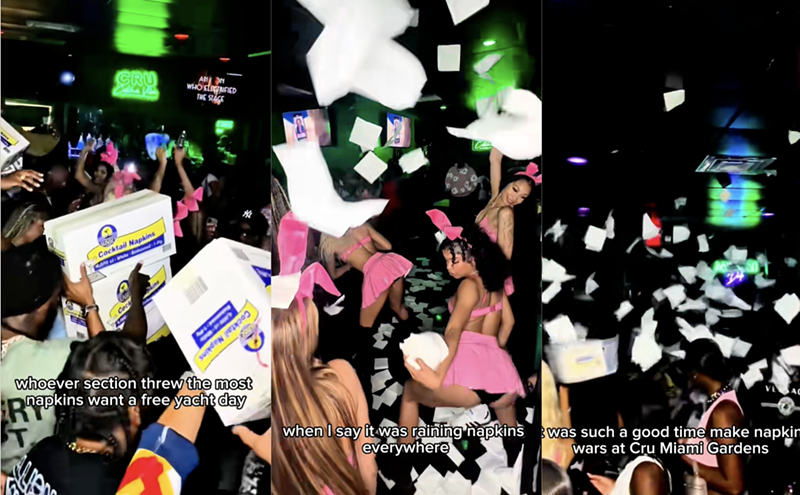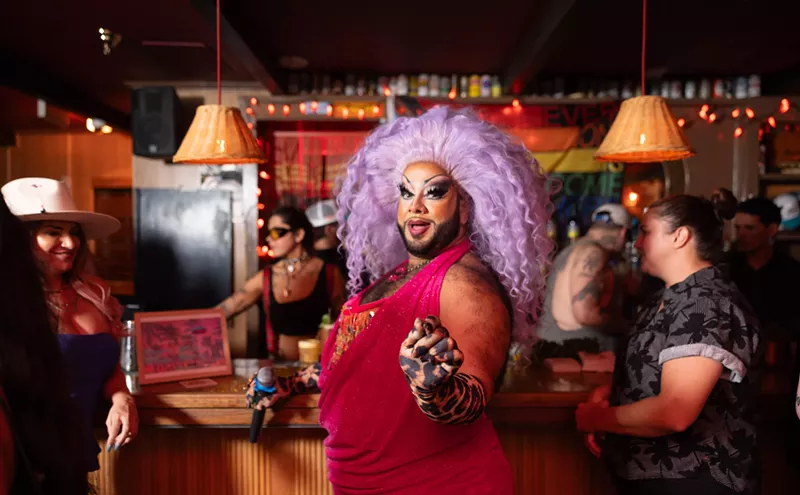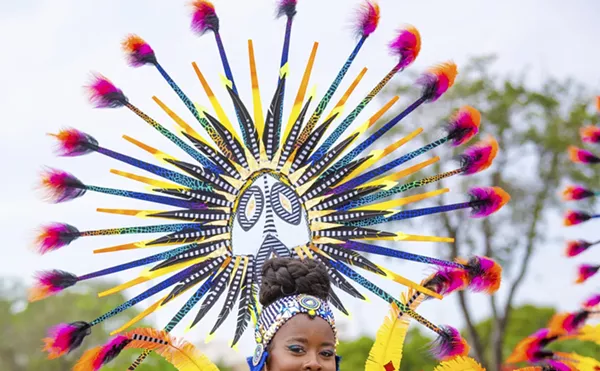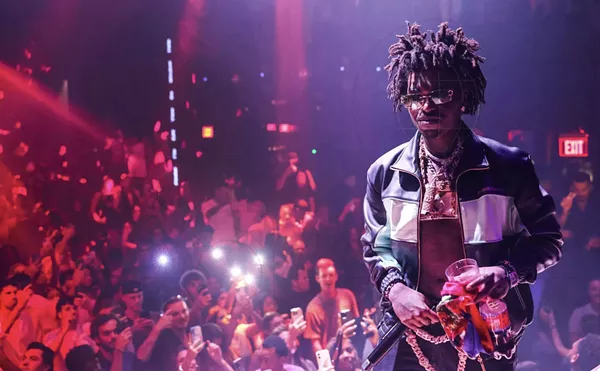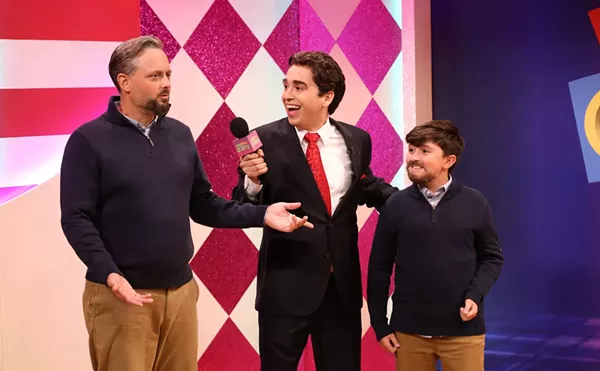Even when speeding north on I-95, it was always hard to miss. The multicolored lights glimmered against the nightscape, reflecting on the dark waters of the Miami River like watercolors swirling on a canvas. When the Metrorail rushed above, it almost seemed like it was floating on a Technicolor brick road that cut through the skyline.
The rainbow of lights that adorned the Metrorail line became a visual representation of the city. Formally called The Miami Line, the light installation was designed and debuted in 1984 by pioneering light artist Rockne Krebs as part of Miami-Dade's Art in Public Places program.
"The Miami Line is not just another line of bulbs in the light show that has become the Miami skyline," says Sean McCaughan, former editor of Curbed Miami and Gridics. "It links the lights of downtown with the lights of Brickell. It's about transportation, imbuing the city with art, and the future. It's a reminder that Miami had important art long before Art Basel."
"It is definitely not OK that the [county] has let the Miami Line burn out."
tweet this
However, from the beginning, The Miami Line had to overcome obstacles, including limited funding, a precarious location, and a fragile medium. The neon glass tubing endured everything from being smashed by sky-high ship masts to disintegration caused by bumpy trains. In 2013, The Miami Line was left to burn out, but the county promised to have Krebs' work illuminating the skyline once again by "fall/winter 2014." Although county public art project manager Patricia Romeu tells New Times that about a fifth of the sculpture will be restored in LED lights in two weeks, so far it's still dark.
"It is definitely not OK that the [county] has let The Miami Line burn out," McCaughan adds. "Maintenance is important."
Krebs was born in 1938 in Kansas City and named for Knute Rockne, Notre Dame's celebrated football coach. After graduating from the University of Kansas in 1961 and joining the Navy, Krebs lived the rest of his life in Washington, D.C., where he died in 2011. From the beginning of his career as an artist, he was fascinated with light. In 1968, his first exhibit at the Washington Gallery of Modern Art featured Sculpture Minus Object, which was based on light bouncing off walls.
"He was a light artist," says Krebs' 47-year-old daughter, Heather, who has run his estate from D.C. since his passing. "There were different variables of light. There were the pieces that happened at night, and then there were the solar pieces."
Krebs was a pioneer in civic art. His sculptures adorned structures such as the Frank Carlson Federal Building in Topeka, Kansas, and the Red River Bridge in Shreveport, Louisiana. "He didn't like the idea of pieces that hung on walls in a gallery and sell for a lot of money," Heather says.
Around 1980, his attention shifted to Miami thanks to Leslie Judd Ahlander, the first coordinator of Miami-Dade's Art in Public Places program, who for 13 years had worked as the art critic for the Washington Post. She introduced his work to the program's committee.
In 1981, he was commissioned to create a piece for Miami International Airport's Terminal E atrium. For Transparent Paper Airplanes, Krebs designed five enormous Plexiglas airplanes soaring high above an audience traveling to faraway destinations. When the sunlight refracted through the planes, the colors would fill the space.
"I hung out in that airport for hours every day waiting for him," Heather says about the installation of Transparent Paper Airplanes. "I sat in the area where the piece was being installed, and he gave me things to entertain myself while he worked."
The installation debuted in 1983, the same year artists Christo and Jeanne-Claude wrapped 11 islands in Biscayne Bay in 6.5 million square feet of floating pink fabric. "I got to go to the opening night of the [Surrounded Island] installation," Heather says. "Everyone was dressed in pink, and I thought it was so much fun."
Around the same time, Krebs was commissioned to do another piece for the county. This one would be inaugurated below the Metrorail line just as the first service began in May 1984. Called The Miami Line, the work featured colors that arched over the river as trains glided above.
"At that time, downtown Miami was pretty much dark," remembers César Trasobares, former executive director of Art in Public Places. "Downtown was an empty, dark void. And then suddenly, in the midst of this nightscape, there was the gorgeous set of colored lights."
Krebs' glowing installation was one of
In 1984, The Miami Line debuted as a 300-foot span for which the county paid Krebs $49,740, according to a March 22 article in the Miami Herald. The installation predated downtown Miami's other multicolored symbol, the 47-story, I.M. Pei-designed Centrust Tower — known today as the Miami Tower — by three years.
"At night, there is little which clearly identifies this cityscape as Miami and not some city in the Midwest or elsewhere," Krebs told the Herald.
With The Miami Line, Krebs gave the city an identifiable symbol that would grace everything from postcards to episodes of Miami Vice, which also debuted in 1984. The piece proved so popular that by 1988, the county expanded it to 1,540 feet. Cost: $126,000.
However, The Miami Line's location quickly became a problem. Shortly after its debut, in early October, a 120-foot ship's mast struck the bridge, causing nonstructural damage and breaking two of the neon tubes. The problem: The county hadn't informed the U.S. Coast Guard of the bridge's construction, so the navigational charts were outdated.
By January 1989, workers were waterproofing failed electrodes and replacing neon tubing that had likely been broken by kids throwing rocks. In the July 1990 issue of Art in America, critic David Joselit called The Miami Line "less artistically sophisticated" than previous works commissioned by the county.
On August 2, 1999, Art in Public Places sent Krebs a letter informing him that the program was taking bids for the repair of his work. "We are still hoping to have everything repaired before the middle of August, which is when The Crew with Richard Dreyfuss and Burt Reynolds will be shooting," collection specialist Bill Iverson wrote Krebs.
The sculpture continued to need repair every time the neon glass tubes broke or burned out. It's not unusual for public art to go through routine refurbishment, especially when exposed to South Florida weather conditions. According to Art in Public Places, the program dedicates about 15 percent of its budget for repair and restoration.
The upkeep was difficult, so in 2013, the county stopped replacing the neon and planned to install LED lights, which are more durable. "Over the years, we had quite a problem keeping it up," the county's Romeu says. "A significant amount of resources was being used to maintain the line, so we just decided we were going to fix it once and for all."
Krebs' daughter Heather would like nothing more than to see her father's landmark shine over the city again. She says nobody from Art in Public Places has contacted her about the restoration. "I would like to know what's going on," she says. "I'm not going to cause any problems."
The work to illuminate the bridge has already begun and will be complete in two weeks, says Romeu, adding that only partial funding has been allocated so far. It will include 52 LED panels, 26 on each side of the track, for a cost of $822,500. That leaves about 1,390 feet of the original sculpture in the dark, which isn't acceptable to some.
"Growing up in Miami, one of my first memories was the rainbow of light that made downtown seem like a magical wonderland," says Sam Baum, director of culture for Red Bull and founder of the nightlife collective Overthrow. "When it disappeared, it broke my heart."
Baum says the city and Krebs deserve to have the piece restored to its original design. Along with Sean Drake of Supermarket Creative, a marketing agency, Baum wants to raise awareness of Krebs' work and possibly raise funds. "I think the city will benefit," Drake says, "as it will bring back the one thing that has been unique and identifiable since the '80s."
Editor Chuck Strouse contributed to this report.


